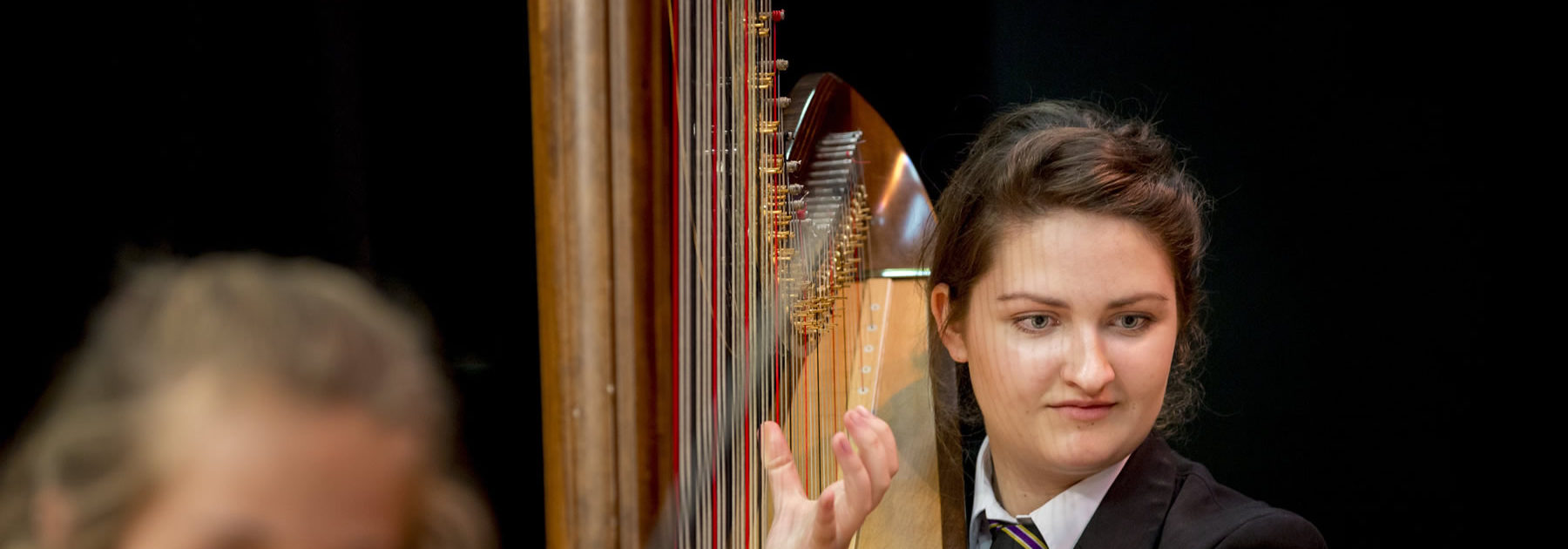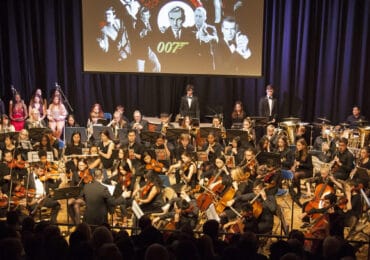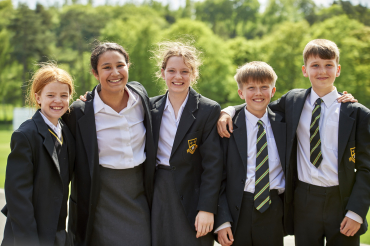Music
Click here to visit our Music Department pages, with details of forthcoming concerts, reviews and information about our ensembles.
We are a music department with a vision that anything is possible and where pupils are able to express themselves in a positive and enriching way. The positive impact that music can have on young people is quite extraordinary. Reading music requires the counting of notes and rhythms and musical theory includes many mathematical aspects. Studies have shown that playing an instrument can improve mathematical ability. Research has also shown that both listening to music and playing an instrument can stimulate the brain, increase memory and can actually increase. The respiratory system is improved – learning how to expel air properly to make the desired sound is an integral part of playing wind and brass instruments. Team skills are a very important aspect of being successful in life. In order for a group or ensemble to make beautiful music, each player and section must learn how to listen to each other and play together. Learning to play an instrument takes time and effort. All musicians have to practise and therefore they have to learn rigour, resilience and perseverance.
We are proud of a music department where anything is possible and where students are able to express themselves in a positive and enriching way.
the study of music
Music is an academic subject that explores a broad and diverse range of different styles of music. At Caterham School, music is taught to all pupils until the end of the Second Year. In the Third Year, academic music becomes an elective subject and it is a very popular choice.
Throughout the curriculum, from First Year up to pupils who study music at A Level, pupils will develop a broad understanding of a range of musical styles and traditions so that they can form their own opinions on music. Pupils explore the three core musical skills: performing, composing, and appraising music.
Lower School
Pupils in the First and Second Year are taught in mixed-ability classes and they focus on a range of different styles and genres of music across the two-year curriculum. Throughout this time, pupils develop a curiosity about music and learn the relevant knowledge and skills so that they can formulate their own opinions and learn how to justify opinions by using musical vocabulary.
Pupils in the First and Second Year are taught in mixed-ability classes and they focus on a range of different styles and genres of music across the two-year curriculum. Throughout this time, pupils develop a curiosity about music and learn the relevant knowledge and skills so that they can formulate their own opinions and learn how to justify opinions by using musical vocabulary.
First Year (Year 7)
Instruments of the Orchestra (including an instrumental scheme)
The Elements of Music
Music and Culture
The Music Industry
Second Year (Year 8)
The Musical Eras
The Leitmotif
Theme & Variations
Music for Dance
Third Year (Year 9)
In the Third Year, pupils choose to continue music. There are a mixture of skills and genres of music that pupils learn about and this year is used as a bridge in preparation for GCSE.
Some topics that pupils explore are:
Film Music
Core Musical Skills
Compositional Techniques and Songwriting
An Introduction to Music Analysis
GCSE Music
Pupils currently follow the Edexcel 9-1 GCSE course which focuses on developing pupils’ understanding of music as well as allowing them to develop their performing and composing skills.
The weighting of the specification is as follows:
Component 1: Performing
30% of the qualification (Solo & Ensemble Performances)
Component 2: Composing
30% of the qualification (Free Composition & Composition to a Brief)
Component 3: Appraising
40% of the qualification (1Hour 45 minute Written Examination)
Throughout the two-year course, pupils will learn how to analyse a range of set works from Areas of Study. Through this, they will develop a broad awareness of the styles and historical, social, and cultural contexts for which they were composed.
A Level Music
Pupils currently follow the Eduqas A Level course which is an exciting and broad specification. It also allows for pupils to focus on their particular strengths and interests.
The weighting of the specification is as follows:
Component 1: Performing
Option A: 35% of qualification (10-12 minute performance)
Option B: 25% of qualification (6-8 minute performance)
Component 2: Composing
Option A: 25% of qualification (two compositions, 4-6 minutes)
Option B: 35% of qualification (three compositions, 8-10 minutes)
Component 3: Appraising
40% of qualification
There are three areas of study:
Area of study A: The Western Classical Tradition (The Development of the
Symphony 1750-1900) which includes two set works.
- Symphony No. 104 in D Major, ‘London’ – Haydn (Detailed Analysis)
- Symphony No. 4 in A Major, ‘Italian’ – Mendelssohn (General Analysis)
A choice of one area of study from:
Area of study B: Rock and Pop
Area of study C: Musical Theatre
Area of study D: Jazz
A choice of one area of study from:
Area of study E: Into the Twentieth Century including two set works:
- Trio for Oboe, Bassoon and Piano, Movement II – Poulenc
- Three Nocturnes, Number 1, Nuages – Debussy
Area of study F: Into the Twenty-first Century including two set works:
- Asyla, Movement 3, Ecstasio – Thomas Adès
- String Quartet No. 2 (Opus California) Movements 1 (Boardwalk) and 4 (Natural
Bridges) – Sally Beamish
This component includes a listening examination.
Back to Academic Departments




